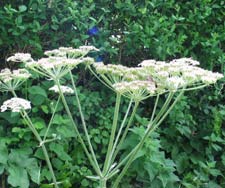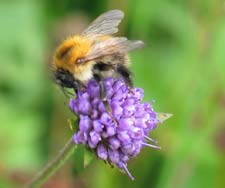Witchcraft and Superstition
Fear of witches was most prevalent from the 15th to the 17th centuries. These were times when reassurance was necessary, as few people died peacefully in their bed of old age. Even up to the late 19th C. belief in witchcraft was a major element of many communities. Witchcraft was the remnant of pagan rites, which remained a viable alternative to Christian practices, when applied in local communities. The Church and ‘witches’ competed to cure illnesses, heal wounds, protect persons and livestock, and find lost or stolen property.
Witches were everywhere – ‘hedge’ comes from the same root as ‘hag’, because hags, or witches, were thought to shelter in hedges – and either good or evil. Before modern medicine, the ‘wise woman’ or ‘white witch’ was the first port of call when illness struck. They also made love philtres, soothed sick babies, deflecteed lightning strikes, promised ‘fair winds’ for departing sailors, brought rain to crops and helped barren women conceive.
The more common perception was of the evil witch, as described by John Gaule in 1646: ‘every old woman with a wrinkled face, a furred brow, a hairy lip, a gobber tooth, a squint eye, a squeaking voice, or a scalding tongue, having a rugged coat on her back, a skull-cap on her head, a spindle in her hand and a dog or cat by her side’. Whether good or bad, witches were inextricably linked with the gathering of herbs and brewing of potions.
As well as witches, there were elves. The Anglo-Saxons thought ‘elf-shot’ the greatest threat, giving it the longest chapter in the 10th-C. Leech Book of Bald. Any sudden and inexplicable illness which struck down humans, and farm animals, could be put down to elf-shot. The discovery of small, Neolithic flints and arrowheads, identified as ‘elf-bolts’, lent credence to the presence of ‘little people’. It was assumed that the arrow made no wound, but instead caused paralysis, the modern term ‘stroke’ being a shortened version of ‘elf-stroke’. The elf-shot victim could be diagnosed only by a ‘cunning man’ or woman, who applied a plant that broke easily, like stitchwort, because elf-arrows were reputed to have shafts of similar brittleness.
Belief in fairies was particularly strong in Scotland and Ireland, where they were referred to as ‘the little people’. There were many tales of visits by humans to the underground homes of the elves and stories of changelings, fairy babies placed in cots as substitutes for human babies. There were cases of babies being left out overnight, and consequently dying, because they were thought to be no longer human. These fairies slept in the wood-anemone, or windflower, protected inside its petals.
People also feared the evil eye, believing it threatened them and their livestock. ‘The look’ was diverted by plants hung above doorways or byres, and by plants with strong smells, such as lilies, mugwort and garlic. Colour too could divert the eye, red being much favoured.
After protection and safety, the next concern was to gain insight into what the future held, for which plants again served a useful purpose. Girls used orpine, amongst others, to test for true love. Ragged robin, red campion, pennywort and knapweed were the equivalent for men, all sharing the colloquial name bachelor’s buttons. Dreams were studied to provide further insight into the future. It was believed, for instance, that dreaming of dandelions would bring misfortune, enemies and deceit, but dreaming of yarrow heralded good news.
The belief in witchcraft declined as science and knowledge broadened. However, superstition remains a significant part of our lives, and wildflowers play a part in it, whether it be the ‘lucky’ heather and four-leaf clover, the Christmas mistletoe, or the ‘she loves me, she loves me not’ of the dandelion.



